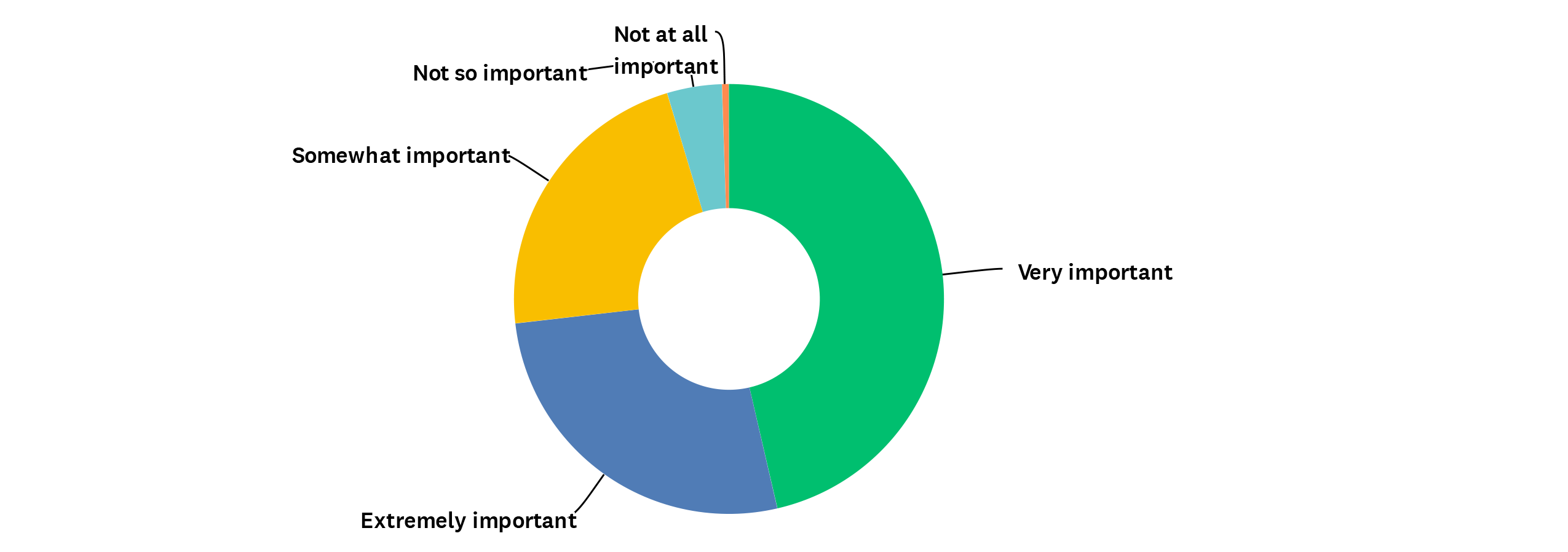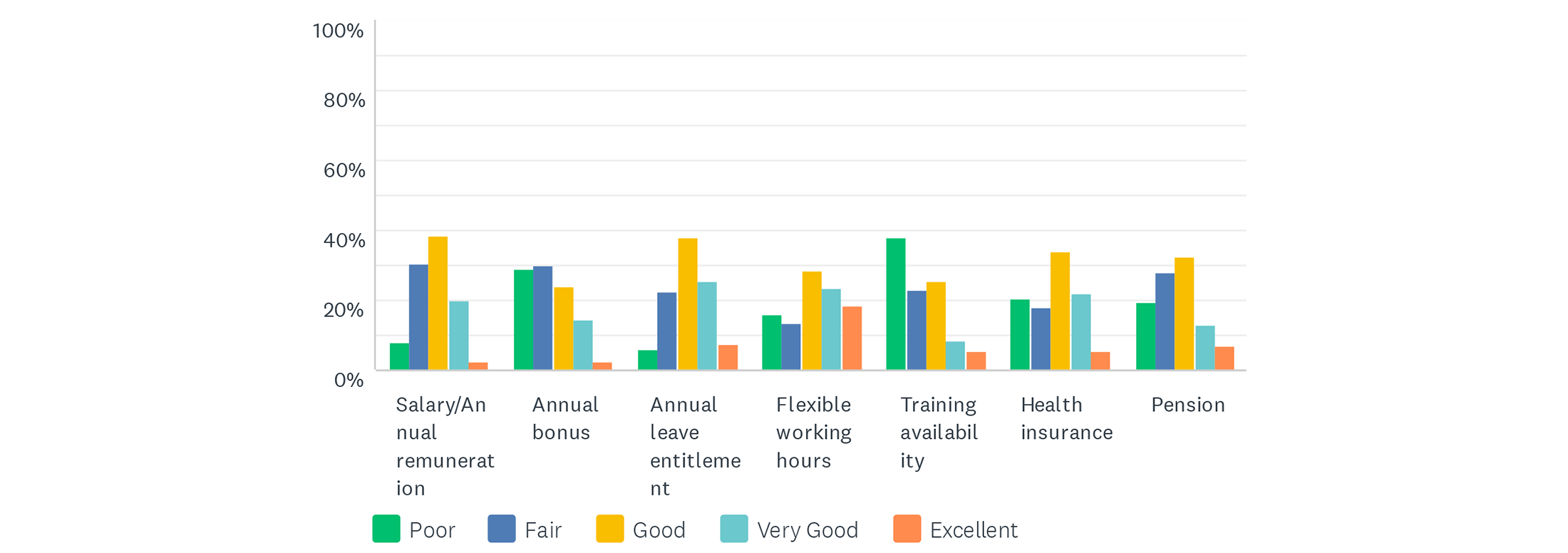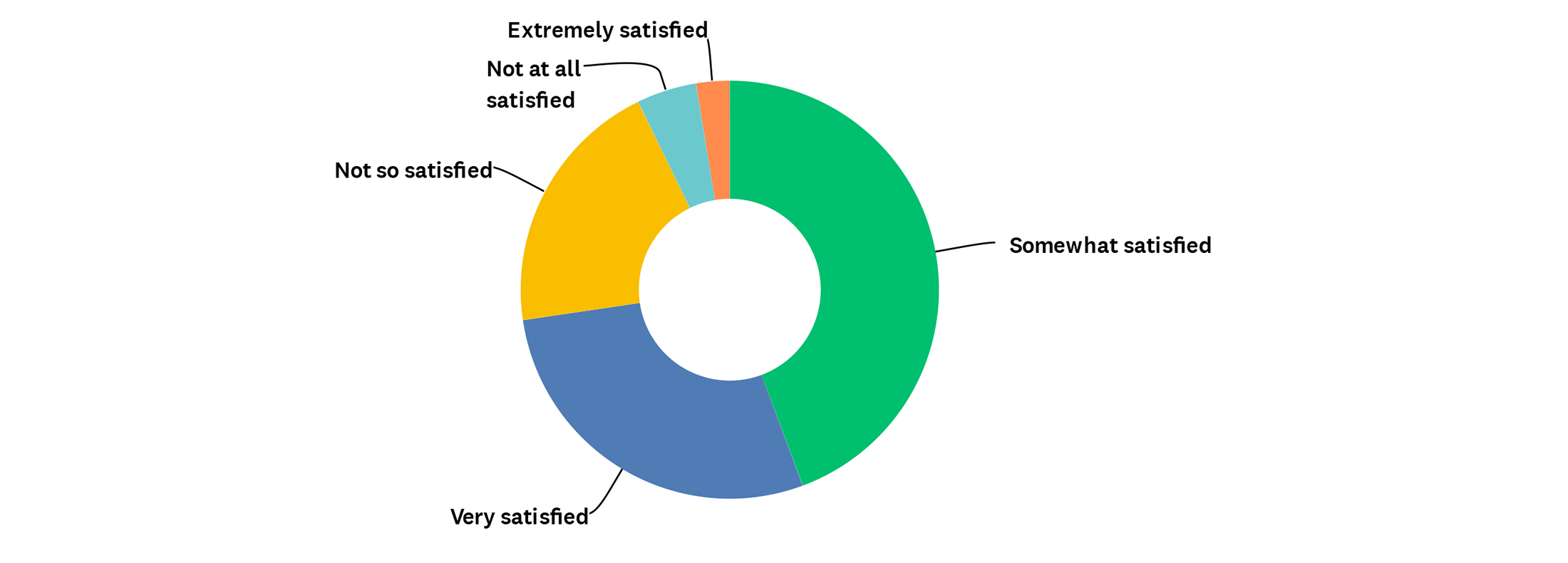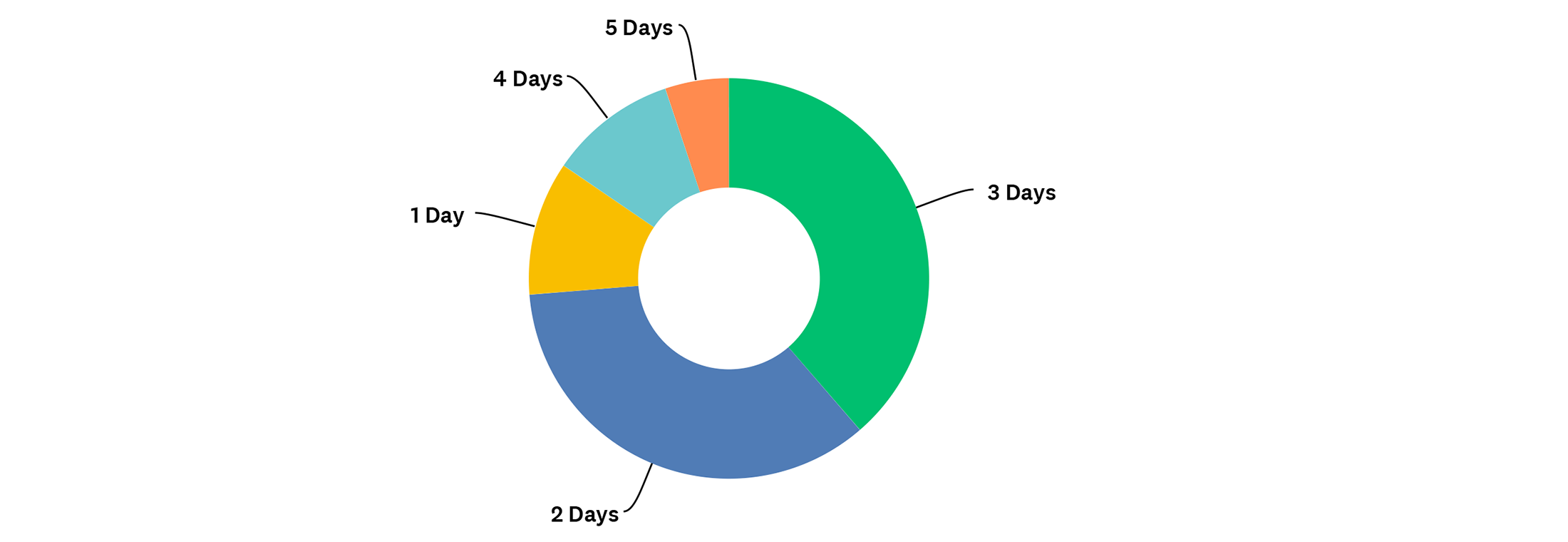INTRODUCTION
As a leading specialist recruiter within M&A, Strategy & Transformation, and Finance Leadership here at Phipps Cameron Recruitment we have seen changes with the value that people place on their benefits as a result of the rise in working from home. Some of the leading companies that we work with have been swift to adapt benefits in order to attract the highest calibre candidates in what is a cautious and challenging environment to engage new employees. However according to Maddie Ballard (2020) from HR Magazine only “Two-fifths (42%) of companies have made or are planning to make changes to their employee benefit programmes as a result of the COVID-19 pandemic and the impact it has had on working life”. We wanted to get a true feeling of people’s value on benefits and ways of working and sent a survey to 8,000 professionals on our database. We received a very strong response and some key findings.
Only 31% of employees were very satisfied or above with their benefit package, showing that companies need to modify their packages to suit the current needs. For example, the biggest challenges workers faced whilst working from home were social isolation, work space and distraction from family and friends, meaning employers could help minimise these challenges for their employees.
Results also show the three most valued benefits are working from home, flexible hours and stock options & equity. 73% of participants said when applying for a job, the employers benefit package is very or extremely important to them so Employers need to make sure they are constantly aligned.
Some key findings are:
- 73% felt that when they apply for a job the benefits package was very or extremely important
- Most important current elements of a benefits package to respondents were working from home, flexible working and stock options or equity
- Biggest level of dissatisfaction for employees in current benefit package were training and bonus.
- Respondents felt that they are productive working from home – 76%
- Going forward 73% of candidates would like to work 2 or 3 days a week at home showing that people still want the social interaction with work colleagues
- This was backed up as 69% of respondents felt that social isolation was one of the biggest challenges
- Whilst 66% of respondents also felt that employers could help with working from home by helping with the cost or better furniture or working tools from home.
The Results: Part 1
Benefits
1. When applying for a job, how important is the organisation’s benefits package to you?
We wanted to find out how important benefit packages are to employees. If it’s something they consider before applying to any job.
According to the results, benefit packages are very important to participants (46%) before applying to a job and 27% said it was extremely important with 22% voting it as somewhat important. Only a small percentage (5%) believe it’s not important.

2. What do you think are the most important employee benefits companies should offer? Please tick 3 options only.
For this question, we wanted to know employees’ most important benefits that a company should offer. Participants could only select three options: working from home, flexible hours, stock options & equity, well-being, buy/sell holidays, travel reimbursement and gym membership.
The three most popular benefits were working from home (78%), flexible hours (72%) and stock options & equity (63%). Based on the results, the pandemic seems to have changed employee’s priorities as the majority want to work from home. The second factor is interesting as you would assume that working from home gives you more flexibility to do others activities. Lastly, employees want to have more ownership of the company they work for. The other categories were rated lower scores.

3. Pease rate the below benefits of your current employer: We asked employees to rate their salary, annual bonus, annual leave, flexible working hours, training, health insurance from excellent to poor.
Salary/Annual Remuneration: Most respondents (39%) rated their pay as good whilst 23% described their salary as very good and excellent and 30% as fair. Only 8% believe their pay is poor. This data shows that the majority are satisfied with their pay.
Annual Bonus: The majority rated their bonus as fair (30%) followed with 29% saying it was poor. The bar chart shows, that 24% consider their employers bonus as good whilst 15% think it’s very good. Only 2% said their bonus was excellent. This is a factor that should be investigated further as we are not sure if all companies offer annual bonuses.
Annual leave entitlement: The majority (72%) of respondents classed their annual leave as good, very good or excellent. Other participants (28%) described their leave as poor and fair.
Flexible working hours: Based on the results, the majority (70%) rated their flexible working hours as good, very good or excellent. We can assume this is because most people are working from home, so it provides us with more freedom to do other activities and make up working hours at a later time.
Training availability: Training seems to be a benefit that is either missing from benefit packages or is provided but managed poorly. 60% described their training as poor and fair with the rest of participants (40%) selecting the answers good, very good and excellent. If employers are going to change or include training as a benefit, then they need to provide it virtually.
Health insurance: The majority (63%) of respondents are happy with their health insurance. However 37% are dissatisfied with their health insurance.
Pension: Most (51%) rated their pension scheme as good or above whereas 49% are not pleased with their pension.

4. How satisfied are you with your current benefit package?
We wanted to know whether employees were satisfied or dissatisfied with their current benefit package offered by their workplace.
Around 45% of respondents were somewhat satisfied with their current benefit package, which suggests that employers are offering a somewhat decent package. This result also shows there is still scope for improvement because not everyone was satisfied with their package. Only 30% confidently said their benefit package was either very satisfying or extremely satisfying. The remaining (25%) participants are not pleased with their benefit package.

The Results: Part 2
Working from Home
1. How comfortable is your employer’s work environment?
We wanted to get a general feel on how comfortable employees are in their current work environment.
Our results show that 38% of respondents are very comfortable with their work environment followed by 30% are somewhat satisfied with the environment. This suggests that businesses seem to be providing a good working environment.

2. Overall do you feel more productive working from home?
The most important question businesses have is whether their employees are actually productive when working from home.
Overall, 74% participants consider themselves productive working from home whereas 26% do not. The question employers should be asking is how to sustain productivity level in this virtual world.

3. How many times per week would you like to work from home?
Since the pandemic has changed the way people work, we wanted to find out how many days people would be happy to work from home. They had the option from 1 day to 5 days a week.
This pie chart illustrates that 39% of participants would ideally like to work 3 days a week from home, which suggests that the other’s days should be worked in the office. Only 6% want to work 5 days a week at home, which is a lot lower than expected. These results are positive and show how important working in an office is to employees.

4. What are the biggest challenges that you face when working from home? Please tick 3 options only.
Working from home comes with its challenges, so we wanted to find out what challenges employees face on a daily basis.
The first challenge respondents face is self-isolation (70%). This could explain why workers only want to work from home 3 days a week (See Q3 in part 2). Going into the office allows interaction with colleagues. The second challenge is the lack of physical workspace (43%) and the final challenge is distraction from family and friends (36%). This data further supports the benefits of working in an office.

5. What should employees do to make remote working better? Please tick 2 options only.
We know that working from home is not easy, so we wanted to know how businesses can make this better for employees.
Our previous bar chart showed that one of the challenges employees faced was the lack of workspace, which could be the reason workers want companies to provide them with furniture (66%). Flexible hours (44%) comes in second place followed by well-being support (36%). One interesting observation is despite social isolation being the main challenge in the previous question (See Q4 part 2), employees are not interested in virtual socials. It had the lowest score.


